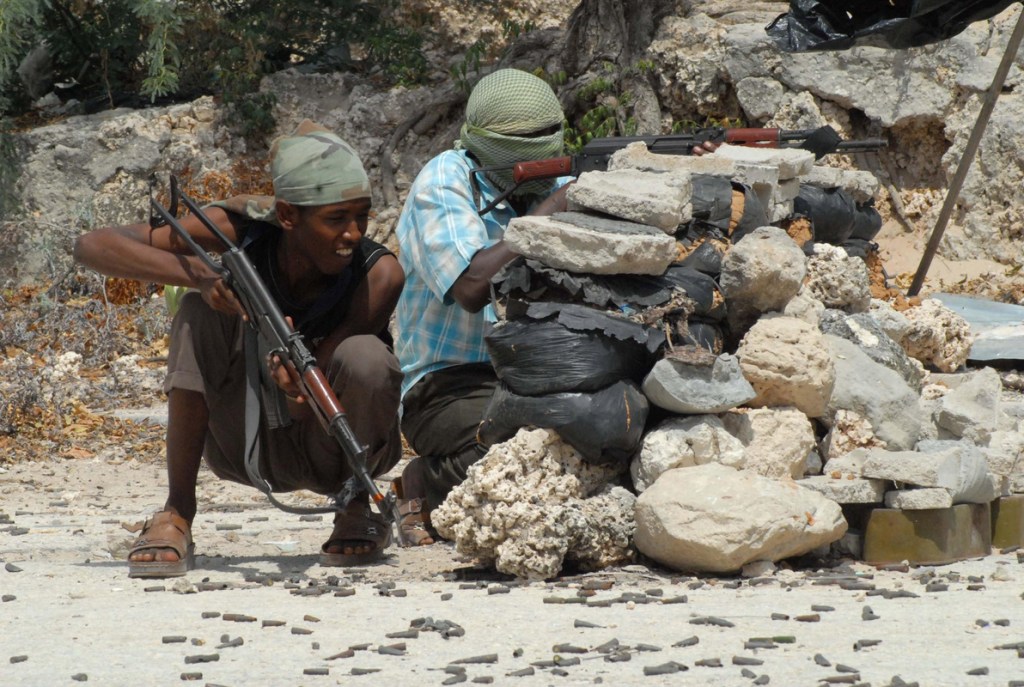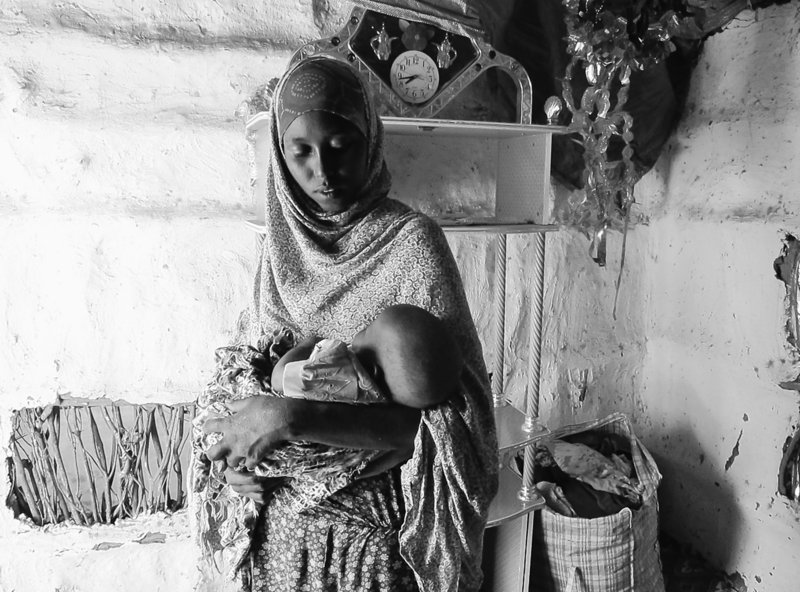– SUDARSAN RAGHAVAN
The Washington Post
IFO, Kenya – Two Islamist militants delivered an ultimatum to Zahra Allawi’s daughters: marry them or die. The men were from al-Shabab, a militia linked to al-Qaida that is fighting Somalia’s U.S.-backed government. The two girls were 14 and 16.
Allawi said her neighbor in southeastern Somalia received the same command. But he swiftly married off his daughter to someone else. The next day, the fighters returned with a butcher’s knife.
“They slaughtered him like a goat,” she recalled.
Three hours later, she and her 10 children fled. After handing their life savings of $300 to a smuggler, they crossed into northeastern Kenya last month, joining tens of thousands of Somalis in this sprawling refugee settlement. They are the human fallout from Africa’s most notorious failed state, haunted by unending conflict and a quiet U.S. counterterrorism campaign.
ONE-FIFTH OF POPULATION FLEES
About 2 million Somalis, roughly one-fifth of the population, have sought refuge in other parts of their country or in neighboring countries, most of them since 2007, when the fighting intensified. Nearly 170,000 have fled this year alone, according to U.N. officials, arriving in desolate camps inside and outside Somalia with barely anything except the clothes on their backs.
Many are running from al-Shabab’s radical dictates and increasing savagery, as well as fears of a major government offensive.
This article is based on more than 60 interviews conducted in Somali refugee communities in Kenya and Yemen. The refugees’ stories of life under al-Shabab could not be independently verified, but community leaders, refugee officials and human rights groups as well as al-Shabab spokesmen gave similar accounts of recent events.
Allawi had reasons to flee. Al-Shabab fighters, she said, once whipped her for not attending midday prayers at the mosque. Last month, she was forced to prove that the man she was walking with was her husband.
An al-Shabab commander also sought to recruit two of Allawi’s sons, ages 10 and 13. Allawi begged him not to take them. In exchange, he forced her to buy three weapons for his force.
“If they could all afford to come, not a single person would remain in Somalia,” said Allawi, 37, seated with her children on the reddish, sunbaked earth. “There is no freedom in Somalia, only death.”
War has gripped Somalia since 1991, when the collapse of President Mohamed Siad Barre’s regime plunged the country into lawlessness and clan fighting.
The country has vexed U.S. policymakers, who fear that Somalia could become the next Afghanistan. In December 2006, the George W. Bush administration indirectly backed an Ethiopian invasion to overthrow the Islamists, who had risen up against Somalia’s secular warlords.
But within two years, the Islamists returned, more radicalized and led by al-Shabab, which in Arabic means “The Youth.” The Obama administration and European nations are backing the Somali government with arms, training and intelligence.
Yet al-Shabab, which the United States has labeled a terrorist organization, now controls large swaths of Somalia. It has imposed Taliban-like Islamic codes in a region where moderate Islam was once widely practiced. Urged on by Osama bin Laden, the group has steadily pushed into Mogadishu, importing foreign fighters and triggering U.S. concerns that the movement could spread to Yemen, across East Africa and beyond. Somalia’s government controls only a few blocks of Mogadishu and has little legitimacy elsewhere.
Many Somalis say they believe the United States is guiding the war.
“We expect American helicopters to strike Mogadishu at any moment,” said Aslia Hassan, 40, who arrived at this refugee settlement three days ago. “This is why we are running.”
The refugees say they are also escaping al-Shabab’s puritanical dictates. Western and Somali music is outlawed in the areas the group controls in southern and central Somalia. Movie theaters have been shuttered, and the watching of films on DVDs is prohibited. In some areas, the refugees say, playing soccer — and even watching it on television — is banned. Only Koranic music is allowed.
Al-Shabab’s religious police, often led by children, order people to put out cigarettes and give haircuts at gunpoint to anyone with modern hairstyles or longish hair, the refugees say. As a warning to those who defy their dictates, al-Shabab fighters have displayed severed heads on steel poles.
MEN, WOMEN SEGREGATED
Women must sheath themselves from head to toe in abayas made of thick cloth and are not allowed to wear bras. In Mogadishu, buses are segregated, with women sitting in the back.
“Even if a pregnant woman asks to sit in the front of the bus, where it is less bumpy, she will be refused,” said Dahaba Duko Ali, 35.
She arrived here last month with her seven children, evading al-Shabab checkpoints. Fearing the police — Kenya has closed its border with Somalia — the smugglers drove along back roads and dropped the family just over the border. Under cover of night, Ali and her children walked 30 miles to Ifo.
Ali Mohamud Raghe, an al-Shabab spokesman, said that “our Islamic religion tells us” to separate men from women and for women to wear thick abayas. The militia forbids all “the evil things that infidels aim to spread” among young Muslim Somalis.
Even donkeys are within al-Shabab’s dictates. The militia has decreed that donkeys cannot wear harnesses, nor can they carry more than six sacks. Women can use only female donkeys; men must use male ones. “How can I feed my children?” lamented Hassan Ali Ibrahim, 40, a gaunt donkey-cart driver who arrived in Yemen with his eight children.
On a Friday in October, Sayeed and Osman Ibrahim were taken from their prison cell in the coastal Somali town of Kismaayo. An al-Shabab court had convicted them of robbery, they said, adding that their imprisonment was politically motivated.
The brothers and a third inmate were driven in a minibus to a field in front of a police station. A crowd of 4,000 had gathered. Ten masked men stood in the field; one held a microphone and another clutched a knife, the brothers recalled.
Sayeed looked away as Osman’s leg was sliced off.
“I felt powerless,” Sayeed said. “I wanted a miracle to happen.”
Then Sayeed’s right hand and left leg were hacked off. He passed out, waking up in a hospital. After 10 days, the brothers fled Kismaayo. In February, relatives smuggled them into Kenya.
“What they did to us has nothing to do with Islam,” said Osman, as he struggled to get up from a chair with his crutches.
But Mohammed Muse Gouled, 70, said al-Shabab had helped bring stability. For years, he said, warlords contested for power and territory, and chaos and insecurity grew. “No one can harm you under the Shabab,” said Gouled.
Habiba Abdi, 19, was five months pregnant and unmarried. Under the dictates of al-Shabab, she would have faced death by stoning. Fighters entered her neighborhood in Kismaayo, searching for the woman with the “illegal child.”
She hid with relatives. Four days later, she begged a smuggler to take her to Kenya. A few months later, she had a baby girl. She named her Sabreen, which means “tolerance.”
They live here with a cousin. Other refugees taunt her as the “one who broke the law of Islam.”
But she is more worried about al-Shabab. Last year, fighters from the militia crossed into Kenya and abducted three aid workers and a Somali cleric.
“Sometimes, I prefer to die,” said Abdi, as she cradled Sabreen in her arms.
Send questions/comments to the editors.




Success. Please wait for the page to reload. If the page does not reload within 5 seconds, please refresh the page.
Enter your email and password to access comments.
Hi, to comment on stories you must . This profile is in addition to your subscription and website login.
Already have a commenting profile? .
Invalid username/password.
Please check your email to confirm and complete your registration.
Only subscribers are eligible to post comments. Please subscribe or login first for digital access. Here’s why.
Use the form below to reset your password. When you've submitted your account email, we will send an email with a reset code.